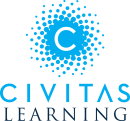While every industry relies on it, each business leverages it in different ways.
We are, of course, speaking of data.
It’s used for everything from determining which market to enter next, to what snacks should stock the company pantry. The amount of data is growing faster than most can keep track of, leading companies to continuously evolve how they manage and utilize it. We caught up with the following four Austin tech companies to get a peek into how they are using data to drive success.

Without data, real estate tech firm OJO Labs would die. Sounds dramatic, but when Lead Data Scientist Kent Czechowski refers to data as the company’s “lifeblood” it suddenly doesn’t sound so overemphasized. Here’s what he means.
Tell us about a recent project you've worked on where you used data to drive your strategy and approach. How did data contribute to that project's success?
Data is the lifeblood of OJO Labs. My team and I are building data-powered tools that deliver home recommendations, insights and guidance to future homebuyers. We distill trends and patterns mined from massive sets of real estate market data into personalized, expert-level advice to guide users through their home-buying journey. We leverage the quantity, quality, scope and freshness of the data to provide the best information available.
We distill trends and patterns mined from massive sets of real estate market data into personalized, expert-level advice to guide users through their home-buying journey.”
More broadly, how does your team leverage data to measure and drive success? Are there any specific metrics you look at to inform business decisions and/or product development?
My team is intensely focused on providing personalized experiences that delight each and every user. Engagement and user satisfaction are our most important metrics. Every idea proposed and every feature built is motivated by an insatiable desire to empower users.

Bright Health has a tough challenge ahead of them in customizing and personalizing the healthcare experiences for patients and physicians. It will take expert level data application to achieve the results they seek; fortunately, CTO Brian Gambs think they’ve got just the team in place.
Tell us about a recent project you've worked on where you used data to drive your strategy and approach. How did data contribute to that project's success?
We just announced that this January, we will begin serving consumers in 13 new markets and six new states. Where, when and how we expand is heavily data-driven. We want to identify the best doctors and hospitals to participate in our “Care Partner Health Plan” model in the areas where the products we offer can help the most people at the best price. Healthcare is extremely complex to begin with, and optimizing along so many different dimensions while trying to deliver a great experience to consumers and physicians would be impossible without great data and a great data team. Ultimately, we want to deliver a health care product where our members receive care from a personalized team, and where the experience reflects that level of care and customization. Reaching that level at scale is going to take serious application of data.
Where, when and how we expand is heavily data-driven.”
More broadly, how does your team leverage data to measure and drive success? Are there any specific metrics you look at to inform business decisions and/or product development?
We spend a lot of time thinking about the cost and quality of healthcare, and there are a vast range of metrics that we consider and measure to evaluate our performance. Some are driven by government regulations and mandates, and some are proprietary measures we have developed ourselves. For example, we are really interested in learning how to predict the ways in which our members want to access healthcare so we can design our products and services to meet their needs without requiring the member to spend too much time and energy thinking about it. If a member is looking for care for her child at 6 p.m. on a Saturday, in a particular part of a city, where is she likely to want to go? How can we make sure that we have a care partner facility in our network that will meet her needs without her having to spend time researching? And if we don’t have that facility, how can we make sure we identify the gap and work to fill it?

Machine learning firm Civitas Learning uncovers massive loads of data to raise graduation rates in higher ed. By 2025, the company hopes to help a million more students graduate. Principal Software Engineer Ricky Rivera, who has been with Civitas for nearly eight years, highlighted a few of the ways they’re using data to reach this goal.
Tell us about a recent project you've worked on where you used data to drive your strategy and approach. How did data contribute to that project's success?
We are heavy users of both Spark on EMR and SQL on Redshift for data processing. Time is often literally money when working with cloud-based resources and optimizing both query performance and cluster configuration is extremely important at our scale. We recently undertook an effort to right size dozens of Redshift clusters used across multiple data pipelines. Collecting data was the critical first step in this process. Every data processing job now generates metadata about resource utilization (e.g. memory, disk, cpu) at both the job and individual query level. Using this data, we were able to identify a handful of outlier queries that we could optimize to reduce peak capacity requirements. Afterward, we were able to utilize the same data to produce recommendations for optimal cluster configurations. We continue to collect this data to monitor the efficiency of our data pipelines on an ongoing basis. This process has both saved us money and improved the experience for our end users. It would have been nearly impossible to achieve the same level of success without collecting and analyzing data to inform our approach.
It would have been nearly impossible to achieve the same level of success without collecting and analyzing data to inform our approach.”
More broadly, how does your team leverage data to measure and drive success? Are there any specific metrics you look at to inform business decisions and/or product development?
We work with colleges and universities every day to make better, data-informed decisions, and we certainly practice what we preach. We are constantly collecting both quantitative and qualitative data from our customers to understand how they are engaging with our applications and what problems they are trying to solve. We look at usage metrics across our applications and features as well as long-term data that measures what is ultimately contributing to student success. We also solicit feedback and look at data from across the higher education landscape to make sure we are appropriately oriented toward solving the most pressing problems for students and institutions.









